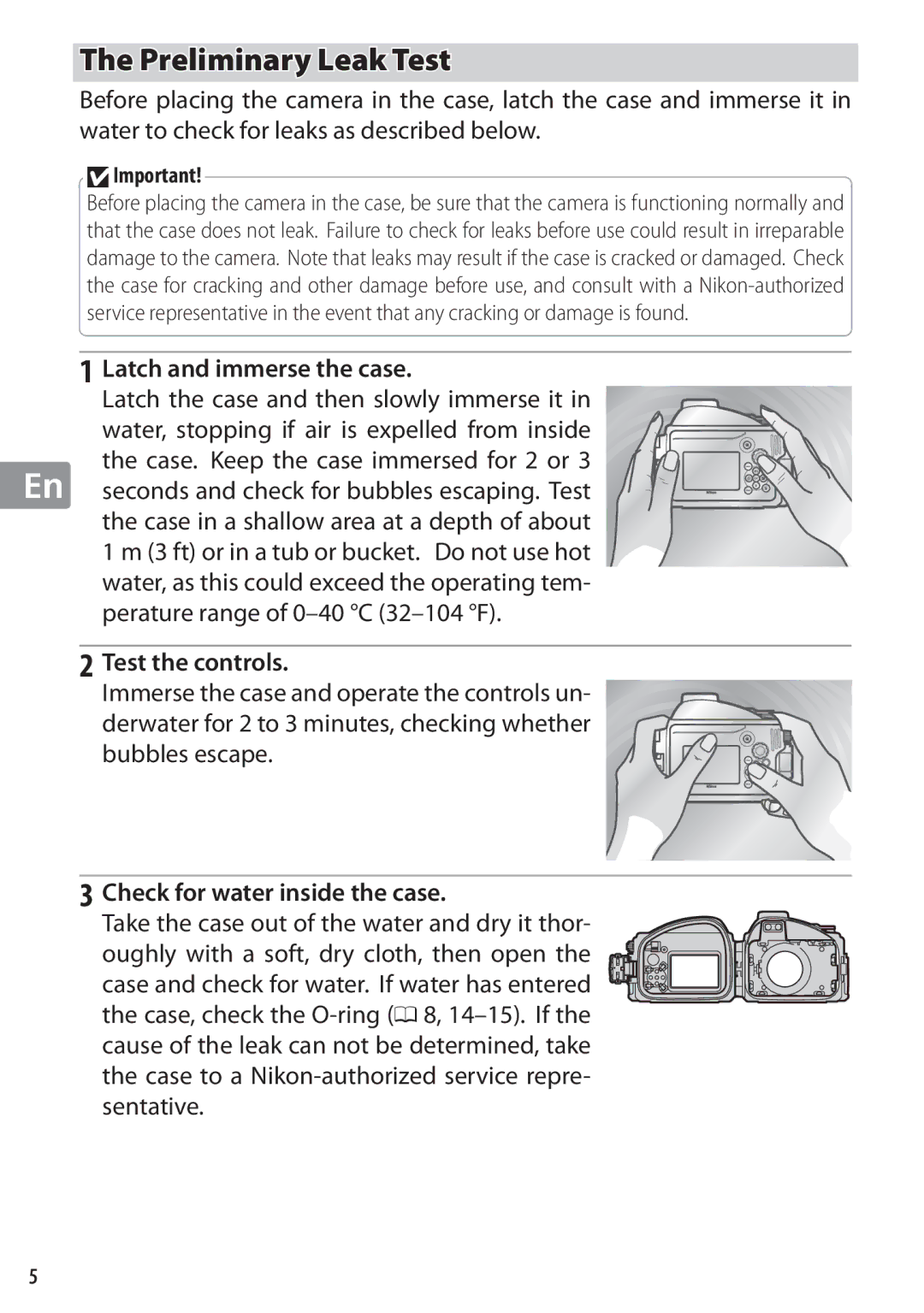
The Preliminary Leak Test
Before placing the camera in the case, latch the case and immerse it in water to check for leaks as described below.
 DImportant!
DImportant!
Before placing the camera in the case, be sure that the camera is functioning normally and that the case does not leak. Failure to check for leaks before use could result in irreparable damage to the camera. Note that leaks may result if the case is cracked or damaged. Check the case for cracking and other damage before use, and consult with a
1Latch and immerse the case.
Latch the case and then slowly immerse it in
water, stopping if air is expelled from inside the case. Keep the case immersed for 2 or 3 En seconds and check for bubbles escaping. Test the case in a shallow area at a depth of about 1 m (3 ft) or in a tub or bucket. Do not use hot water, as this could exceed the operating tem-
perature range of
2Test the controls.
Immerse the case and operate the controls un-
derwater for 2 to 3 minutes, checking whether bubbles escape.
3Check for water inside the case.
Take the case out of the water and dry it thor- oughly with a soft, dry cloth, then open the case and check for water. If water has entered the case, check the
5
